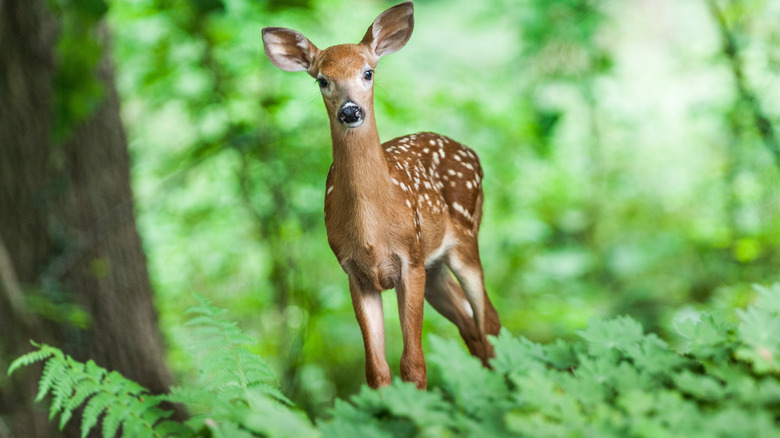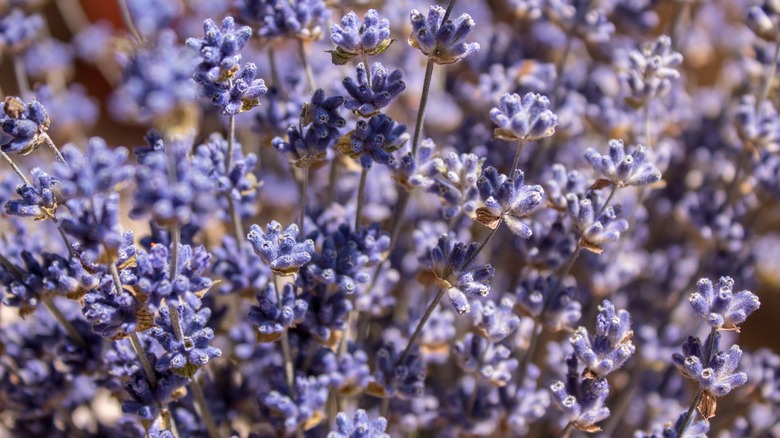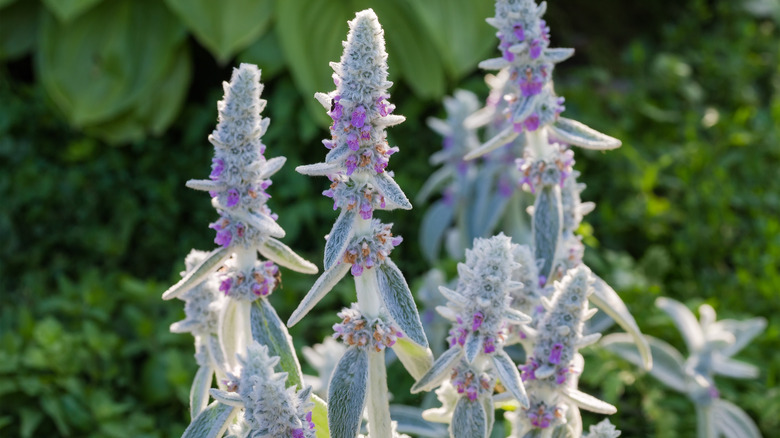Deer-Resistant Plants That Can Save Your Garden
Deer are beautiful creatures and most gardeners bid this majestic animal glad tidings of good cheer, right up until they sneakily eat your tomato plants in the middle of the night. Being robbed of the literal fruits of your labor before you get to lay your crop out at your own kitchen table is the worst. While deer eating your garden is bad, what's worse is the letdown after following dubious advice on how to rectify the situation. How many bars of deodorant soap or boxes of dryer sheets must be squandered only to realize that the trick did not work and, as one Houzz reader said, you only end up with clean deer?
One line of defense that is neither new nor trendy is bordering your garden with deer-resistant plants explains HGTV. This solution requires old-school planning and should be paired with other modern gardener goals — like being pollinator-friendly in the face of the bee shortage crisis, as well as being savvy rather than combatant at deer who may be pregnant in spring or nursing baby foals. That's a lot of goals that may seem to be working at cross-purposes, but getting honest about the situation cuts through a lot of wasted time and resources.
Think stink
Deer have an extraordinarily heightened sense of smell, so think about plants that will smell bad, or at least smell strong and will rub off on the deer, like lavender or mint, says Rural Sprout. Marigolds also have a smell that makes them a good repellent to deer and the same is true for chives, which have the added benefit of detracting aphids and Japanese beetles. Onions, leeks, dill, and fennel all emit odors that also make them deer-resisting contenders for the outer border of your garden. However, all scents are not created equal. Take hosta plants for instance, which smell strong, spread up to 8 feet, but will be your worst nightmare as a border plant since deer adore them.
Whatever border you consider having around your garden, it will be most effective if you make it several plants deep, so the deer are unable to simply stand on the outside and lean over border plants to your cabbage and beans. If that has you thinking about tall grass, Plant Addicts warns that although tall grass is not a typical snack for deer, they will dig in if they get hungry enough and cannot find other options. Sticking with a combination of plants like thyme, oregano, lavender, sage, nettle, dill, garlic, chives, mint, and daffodils is a good start.
Fuzzy and prickly help keep deer away
Beyond aromatic plants, a gardener's next go-to for saving your garden from deer is fuzzy or prickly plants. Deer hate the feel of these kinds of leaves and stem on their tongue, says Savvy Gardening. A good option to add to your deer-resistant border is lambs ear (stachys), which has the noble heritage of historically healing soldier wounds on the battlefield, or lady's mantle (alchemilla), which some herbalists use for insomnia and anxiety. Homeopathic remedies aside, lamb's ear spreads without becoming invasive, has summer blooms that bees, butterflies, and hummingbirds love, and is fuzzy, which deer hate. Other plants to try include flowering tobacco, poppies, begonias, and heliotrope. Or consider a globe thistle, with its prickly, thorny leaves that Gardening Know How says will bloom spiky flowers that offer deer-impeding stems up to 4 feet tall.
After strategizing which aromatic, prickly border plants you plan to use to discourage deer from getting into your garden, you might decide to add a strategically placed fern or other shrubs to help handle the deer deterring chore. On top of defensive strategies, Rural Sprout also suggests throwing deer off track altogether by planting buckwheat in a sunny spot nearby. Deer will devour the leaves, flowers, and seeds of buckwheat, possibly filling them enough to keep them away from your garden.


